TL;DR
Wondering if interior designers are only for rich people? Not anymore. Between affordable online interior design, clear DIY home decor rules, and smart planning tools, you can create a cohesive, functional 800 sq ft apartment on a reasonable budget. Learn how to mix DIY with light-touch pro help and where to spend to make the biggest impact in small spaces.
Are interior designers only for rich people?

Utilizing virtual tools and consults empowers budget-friendly, personalized interior design decisions.
Design used to feel binary: either hire a full-service interior designer or wing it with DIY. Here’s the thing—2025 has a third path. Online interior design services, one-hour consults, and smart visualization tools mean good interiors are no longer reserved for big budgets. With an 800 sq ft apartment, thoughtful choices matter more than pricey ones.
I’ve seen first-time owners book a £50 consultation to sanity-check a layout, couples pay around £100–£300 for a virtual room plan, and renters use free apps to test paint before committing. The result? Homes that feel tailored, not templated. If your goal is functionality and style—not impressing strangers—you can get there with a blend of DIY and targeted expert help.
A practical mindset for 2025 design
Key idea: For small apartments, spend on decisions, not just decor. Experts recommend allocating 5–10% of your total room budget to planning—measuring, space-planning, and testing colors—before you purchase a single sofa.
Think of it as a design philosophy: cohesion, lighting, and curation. In practice, that means repeating colors/materials for harmony (cohesion), layering ambient/task/accent lighting (lighting), and editing what’s on display (curation). These budget decorating ideas work for DIY home decor, small-space hacks, and even online interior design packages.
One young couple I spoke with hired an online designer for a quick virtual session—about £120—to get links and layout options, then handled the shopping and setup themselves. Another homeowner watched a staging team transform a house so convincingly she vowed to hire a designer when she downsized. The lesson isn’t “always hire help.” It’s that clarity up front multiplies every pound you spend later.
Anecdote
A first-time buyer booked a £50 consult to confirm appliance placements, then used a free planner to design and solicit feedback; another renter paid about £120 for a virtual session and got links for everything needed to finish a bedroom; a retiree saw a staged home and decided that when downsizing, bringing in a designer for planning would be worth it for peace of mind.
DIY HACKS & TRICKS that actually work
01. The 60/30/10 Palette Plan (color scheme)
Start with a 60/30/10 color ratio to keep small spaces cohesive without feeling flat.
What it is: A simple palette rule: 60% main color (walls/large rug), 30% secondary (sofa, drapery), 10% accent (pillows, art, lamps). It’s an easy DIY home decor framework that looks polished fast.
How it works: In an 800 sq ft apartment, too many unrelated colors can make rooms feel smaller. A controlled ratio creates rhythm while allowing personality in the 10%. Experts advise sampling at least three paint swatches per wall and viewing them at morning, afternoon, and evening light before choosing. Rule of thumb: if you’re unsure, keep walls in the main color and repeat the secondary color at least twice in the room for balance.
- Mask off 1 m squares to test paint in different corners.
- Pick a wood tone or metal finish to repeat as part of your “30%.”
- Swap accents seasonally without touching the 60% base.
02. Layered Lighting Map (ambient, task, accent)
Plan three light layers per room and match color temperature to function for instant “designer” warmth.
What it is: Use ambient lighting for general glow, task lights for work, and accent lights to highlight art or texture. Aim for 2–3 fixtures minimum per room.
How it works: Overhead-only lighting flattens small spaces. A floor lamp at 2700–3000K, a task lamp at 3500–4000K, and dimmable overhead lighting create depth and comfort. As a rule of thumb, target 20 lumens per sq ft for living rooms and 50 lumens per sq ft for kitchens.
- Add plug-in sconces where hardwiring isn’t possible.
- Use warm bulbs (2700–3000K) in bedrooms; neutral (3500–4000K) for kitchens.
- Place an accent light to graze a textured wall for instant luxury.
03. Right-Size Furniture (scale and flow)
Maintain at least 30–36 inches of clear circulation where possible, and float rugs 8–12 inches under major pieces.
What it is: Choosing furniture that fits—not fights—your floor plan. Scale and clearances are your best friends in an 800 sq ft home.
How it works: A 72–84 inch sofa often suits small living rooms; nesting tables and apartment-scale armchairs preserve pathways. Designers often advise rugs to be large enough that front legs of all seating sit on the rug, which visually unifies the zone. Rule of thumb: leave 14–18 inches between sofa and coffee table.
- Sketch your floor plan on graph paper at 1:20 scale.
- Pick one statement piece; keep others visually lighter.
- Use leggy furniture to expose more floor and “expand” space.
04. Two-Zone Studio Layout (zoning without walls)
Use rugs, screens, and lighting to split a studio or open plan into at least two clear zones.
What it is: Creating a living-sleeping or living-dining separation with soft boundaries. Zoning reduces visual noise and increases function.
How it works: A 5x8 or 6x9 rug anchors living. A low bookcase or open screen defines sleeping without blocking light. Aim for a minimum 24 inch walkway between zones. Pro tip: use different lamp types in each zone so your brain reads them as separate areas.
- Align the bed parallel to the longest wall for calm sightlines.
- Repeat one color in both zones for cohesion.
- Use blackout drapery behind a screen to soften a sleep nook.
05. Closed Storage First (curation over clutter)
Target a 70/30 split: 70% closed storage, 30% display, to keep small homes feeling calm and intentional.
What it is: Prioritizing concealed storage so only the useful, beautiful, or sentimental is visible.
How it works: Editing boosts perceived luxury. Hidden storage benches, media units with doors, and tall wardrobes reduce “visual inventory.” Experts recommend a yearly 20% declutter of open shelves to maintain the 70/30 balance. Rule of thumb: one closed cabinet per frequently used hobby or category.
- Choose media units with cord cutouts to hide power strips.
- Store seasonal items in under-bed drawers or vacuum bags.
- Group displays in odd numbers for natural rhythm.
06. The Two-Tone Wall Trick (height illusion)
Paint the lower 60% darker and the upper 40% lighter to stretch perceived ceiling height.
What it is: A paint split that adds architecture without trim. A chair-rail-height line sharpens small rooms.
How it works: The eye reads the lighter top as airier, which makes ceilings feel taller. Keep the break line level around the room and align it with door and window heads where possible. Rule of thumb: a 60/40 split works in most 8–9 ft ceiling rooms; shift to 55/45 for very low ceilings.
- Use high-quality tape and a laser level for a crisp line.
- Choose matte on top to ease glare; satin on bottom for wipeability.
- Color-match the darker tone to a rug or upholstery.
07. Rental-Friendly Upgrade Kit (no-drill impact)
Focus on reversible changes: textiles, lighting, hardware, and peel-and-stick surfaces.
What it is: Quick upgrades with outsized effect for DIYers and renters.
How it works: Swapping lamp shades, adding plug-in pendants, installing stick-on backsplashes, and using large art ledges all read as “designer” without permanent work. Rule of thumb: change the light temperature, the largest textile, and one large wall to transform a room in a weekend.
- Layer a 9x12 rug under a smaller patterned rug for depth.
- Use removable wallpaper on a single feature wall.
- Upgrade cabinet pulls with center-to-center matches.
08. The Virtual Designer Combo (budget e-design)
Combine DIY with a one-hour consult or an online room plan to avoid costly mistakes.
What it is: Affordable online interior design gives you a floor plan, shopping list, and color guidance without full-service fees.
How it works: Typical e-design runs roughly £150–£500 per room, while full-service design can be 10–20% of project cost or £50–£150 per hour, varying by region and scope. For an 800 sq ft apartment, many people mix DIY with 1–3 virtual sessions to validate layout, palette, and lighting. Rule of thumb: spend 5–10% of your room budget on expert planning to reduce returns and rework.
- Prepare a brief: measurements, photos, and 8–10 inspiration images.
- Ask for two layout options and a phased shopping list.
- Use your consult to confirm big pieces before ordering.
What ties these ideas together
Shared thread: These ideas trade perfection for intention—reuse, warmth, sustainability, and smart limits. Each hack multiplies clarity, then style follows.
I’ve watched hesitant decorators light up when they realize their home doesn’t need more stuff; it needs clearer rules. A palette ratio, a lamp plan, a scale check—these are small decisions that make every other decision easier.
Visualize before you buy
Try-before-you-try: Visualize your small-space design digitally so you can test colors, layouts, and lighting in minutes.
Before you pick up a roller, upload a room photo to ReimagineHome and iterate. Try the 60/30/10 palette on your walls, move the sofa to test clearances, preview a two-tone paint line, or swap rug sizes virtually. It’s faster than returns and far cheaper than repainting. For budget decorating ideas, this is the bridge between inspiration and action.
Visualization Scenario
Upload your living room photo, test the two-tone wall at 60/40, check that a 6x9 rug anchors the sofa with 14–18 inches to the table, then swap lamp temperatures from 3000K to 2700K to see how evening light feels—inside ReimagineHome.
FAQ: budget interior design and small-space decorating
Are interior designers only for rich people?
No. Affordable online interior design and one-hour consults make professional guidance accessible, especially when paired with DIY home decor. Experts suggest using targeted help to validate layouts and palettes before buying.
How much does an interior designer cost for an 800 sq ft apartment?
Online interior design often ranges £150–£500 per room, while full-service can be 10–20% of project cost or £50–£150 per hour depending on scope and location. Many small homes mix DIY with 1–3 virtual sessions to stay on budget.
Is DIY a reliable option for small apartments?
Yes—use clear rules: 60/30/10 color ratio, layered lighting, and measured clearances. Visualization tools reduce errors and help DIYers make confident choices.
What should I buy first when furnishing on a small budget?
Prioritize anchor pieces with long lifespans: sofa, mattress, dining table, and a large rug that fits the layout. Then add lighting and storage before decor.
How do I choose the right lighting color temperature?
Use 2700–3000K for living and bedrooms, 3500–4000K for task-heavy zones like kitchens and desks. Layer ambient, task, and accent lights for depth.
Can I hire an online designer for under £500 per room?
Often, yes. Many e-design services fall within £150–£500 per room and include a plan, color guidance, and a shopping list, leaving installation to you.
Design for how you live, not how it looks on a mood board
Design isn’t a status symbol; it’s a series of thoughtful choices that shape how you live every day. If you’re weighing DIY versus interior designer, know that the middle lane—brief consults, online interior design, and visualization tools—fits most budgets and most 800 sq ft apartments. Start with cohesion, layer your lighting, curate what’s on show, and spend on the decisions that prevent expensive missteps. In 2025, the best interiors aren’t about perfection. They’re about presence—spaces that work hard, feel personal, and welcome you home, every single time.
Ready to test your ideas? Try a quick mockup with ReimagineHome and make your next move with confidence.
.svg)

.svg)

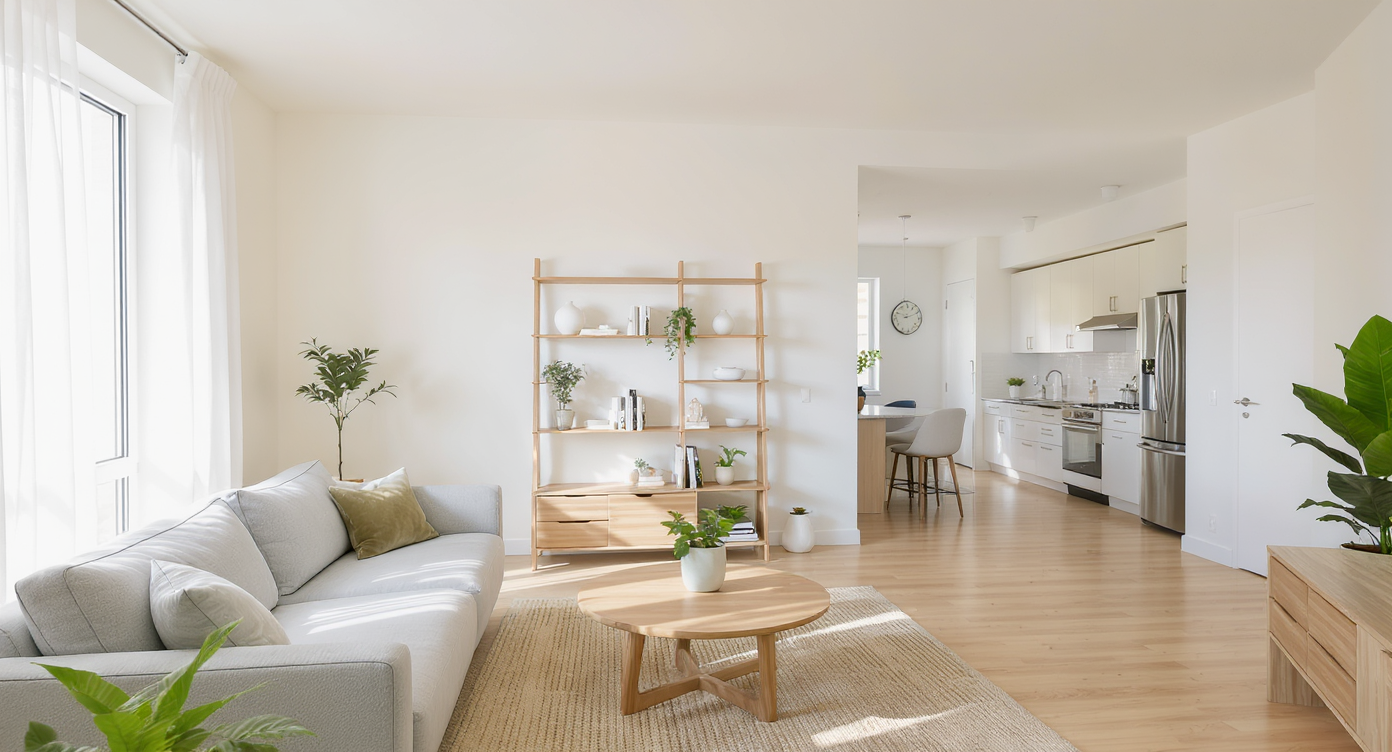

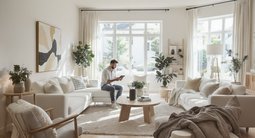
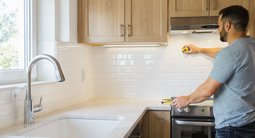

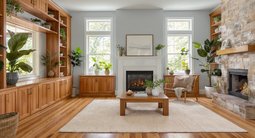
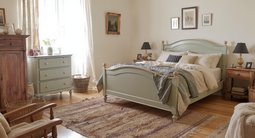



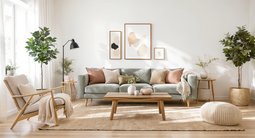


.png)